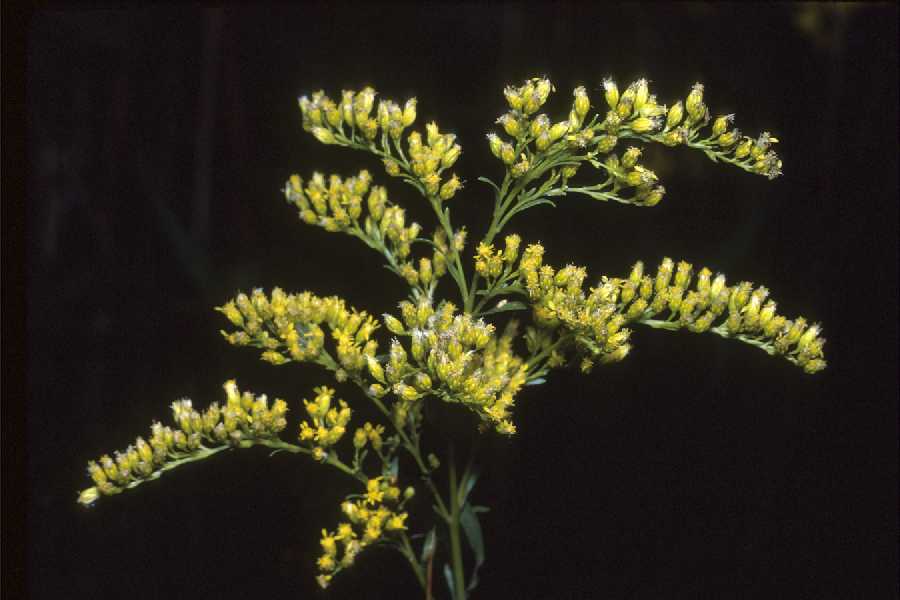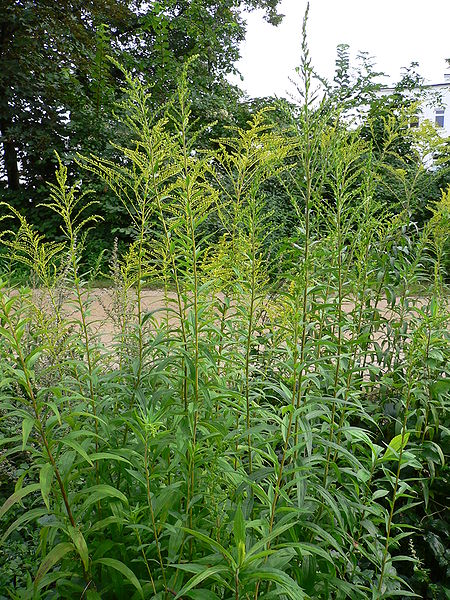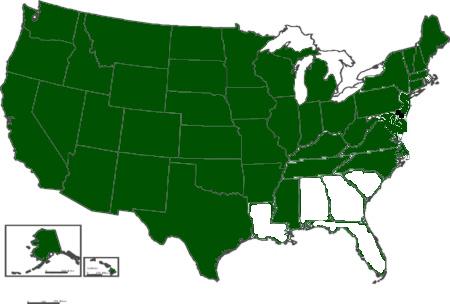Solidago canadensis
 |
 |
Photo Courtesy USDA |
Photo Wikipedia |
| Botanical name: | Solidago canadensis |
| Common name: | Canada goldenrod |
| Group: | dicot |
| Family: | Asteraceae |
| Growth type: | forb/herb |
| Duration: | perennial |
| Origin: | native |
| Plant height: | 1 - 5' |
| Foliage: | alternate, 3 veined, leaves more or less uniform in size or very gradually reduced in size; sharply toothed |
| Flower: | yellow; heads 1/8" long; flower rays very small, plume like (secund) |
| Flowering time: | July - August |
| Habitat: | fields and roadsides |
| Range in New Jersey: | statewide |
| Heritage ranking, if any: | n/a |
| Distribution: |  |
| Misc.: | S. canadensis看is part of the看Solidago canadensis看species complex which also includes S. altissima and S. gigantea. S. altissima看has sometimes been classified as a variety of看S. canadensis.
In distinguishing between the two, note that S. altissima is remotely toothed; S. canadensis is sharply toothed. Also,the leaves of S. altissima are scabrous (rough to the touch) on the surface, and somewhat downy beneath. S. canadensis is not. Both S. altissima and S. canadensis are largely lacking in basal leaves. Goldenrood is food for many types of bees, wasps, butterflies, moths, beetles, and other insect species.看Praying mantises often lay their eggs on goldenrod. It tends to grow in colonies and the stands provide cover for birds and small mammals. Tall goldenrod was used as as a dye for wool, silk, and other fabrics. Goldenrod is often mistakenely blamed for causing hay fever because it blooms at the same time as the real culprit, ragweed.看 |